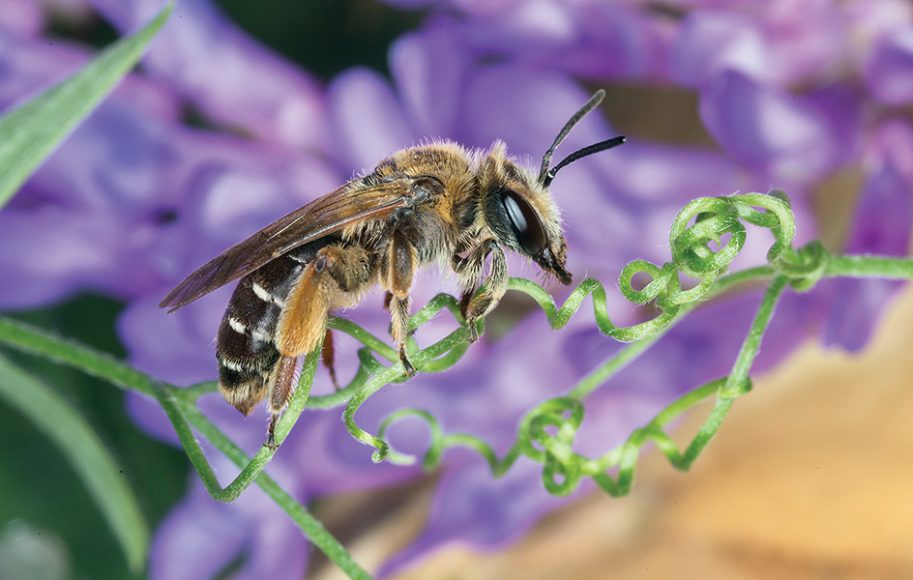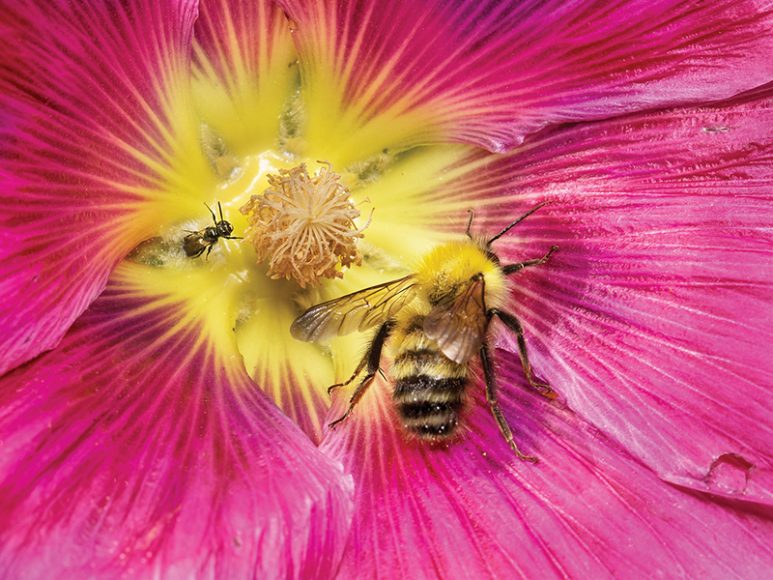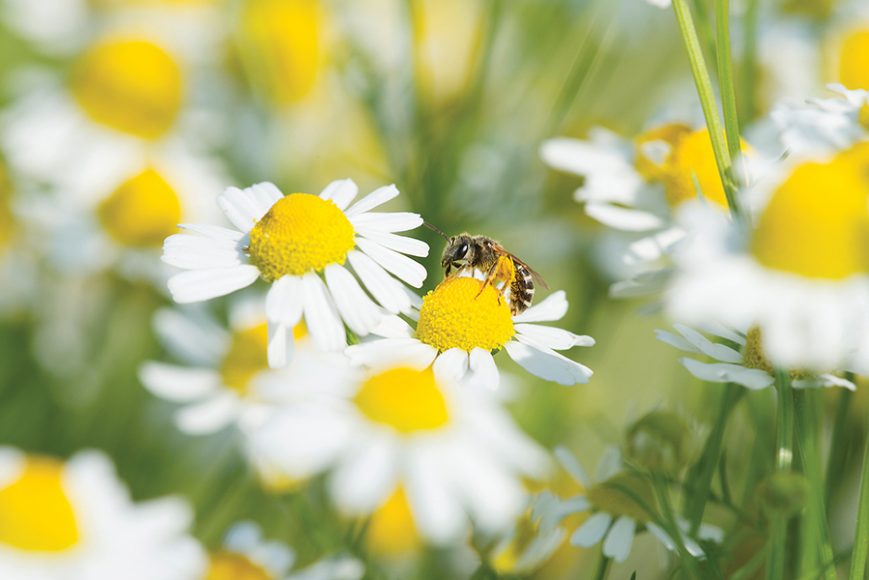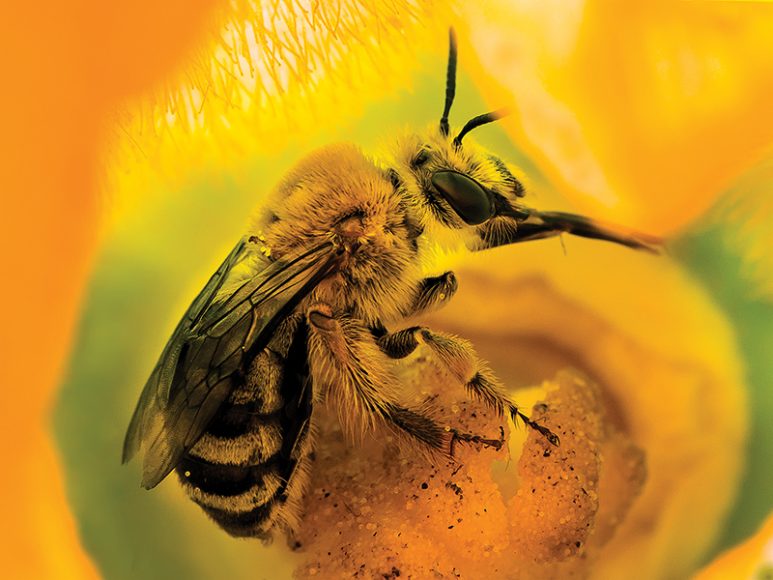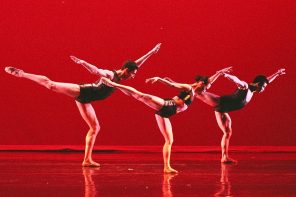Uneasiness around bees seems to be ingrained in human beings.
“Watch out for the bees. Don’t get stung” is usually an early parental admonition.
But nature photographer Ross Eatman and photojournalist and writer Paula Sharp, a husband-and-wife team from Mount Kisco, call attention to a gentler, more important aspect of these creatures — their ability to pollinate some 250,000 species of plants worldwide. The couple’s exhibit, “Wild Bees: Photographs by Paula Sharp and Ross Eatman” at Greenwich’s Bruce Museum through Nov. 11 is the result of a three-year project dedicated to documenting the complexities of more than 100 bee species.
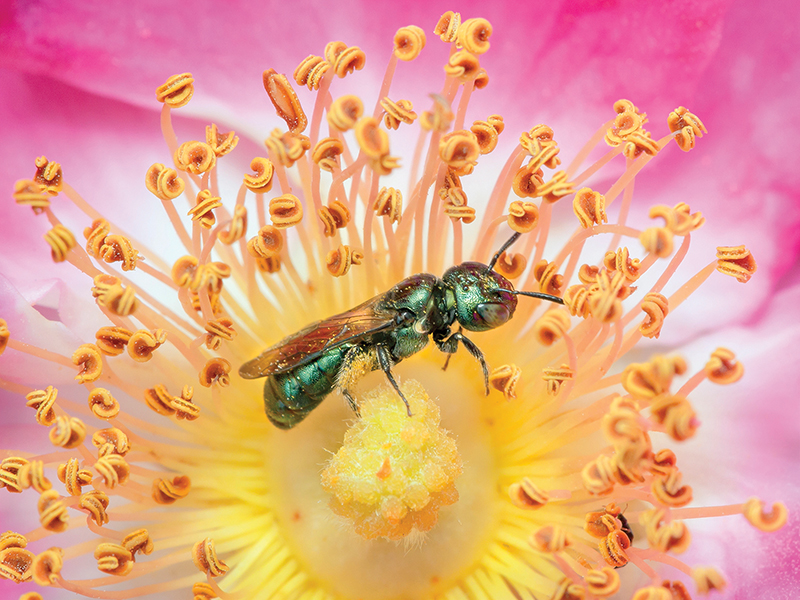
Their exquisite, macro images emphasize the bees’ variety, including their facial features and bodily structures, as well as the vivid flora that serves as their food source. There are more than 200 species of bees in New England and more than 20,000 worldwide. And, contrary to popular belief, Sharp says, this includes both native and wild bees.
“Most of us aren’t aware of wild bees,” she says, explaining that wild bees were actually brought to the United States from Africa.
“But bees (both native and wild) come in all shapes and sizes. Fluffy and endearing bumblebees; wasp-like sweat bees, the color of emeralds; leafcutter bees that line their sumptuous underground brood cells with flower petals and leaves the bees snip from plants; industrious squash bees that pollinate nearly all of America’s squash and melon crops; and on and on.”
Sharp got caught up in the buzz during a photojournalism assignment in the Amazon. During the trip, she was asked to photograph people whose trades were disappearing due to rainforest devastation, such as fishermen, nut harvesters and small farmers.
“One of the people I photographed was a beekeeper who cultivated a stingless bee and produced a sweet and sour honey,” she says. “I was captivated by his beekeeping and by the bees themselves. When I returned to the States a few weeks later, I told Ross we should pursue an assignment photographing bees here.”
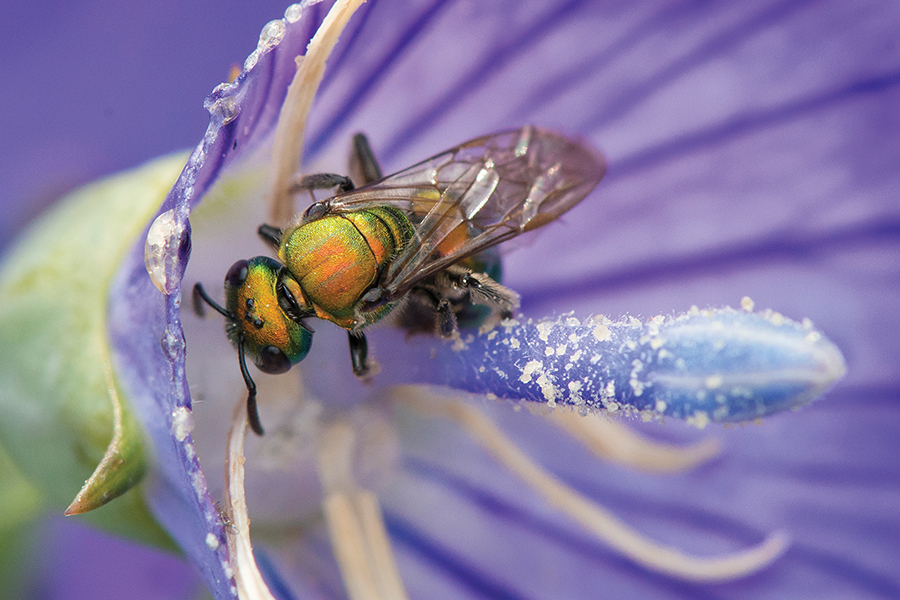
This experience prompted further exploration of the Rockefeller State Park Preserve in Pleasantville, which she and Eatman have been frequenting for 20 years.
During one of their visits, they photographed bees perched on plants near the preserve’s 80-acre Stone Barns Center for Food and Agriculture, a nonprofit farm. Much to their surprise, this caught the attention of Susan Antenan, the manager of the Rockefeller State Park Preserve, who proposed they document the land’s wild bee population, which began the three-year project.
“Photographing bees is humbling, because you are reminded constantly of the wondrous intricacy and effable beauty of the natural world,” Sharp says.
“And they can teach us a thing (or two) about hard work. They are the true busy bees, after all.
“Bees themselves communicate an impressive intensity in the way they go about working — gathering nectar, digging holes to lay their eggs in and provisioning their nests.
“The industriousness of many wild bee species seems particularly moving, because bees are special among earth’s animals,” Sharp says. “Many have the singular quality of never killing other creatures in order to survive. They don’t even kill plants. Instead, they pollinate plants, aiding in their survival and, by extension, the survival of many animals, humans included.”
The photographs — which are displayed amid larger-than-life models of bees, real-life insect specimens and interactive bee-identification equipment — call attention to this “secret” life of bees, signifying their crucial role in nature.
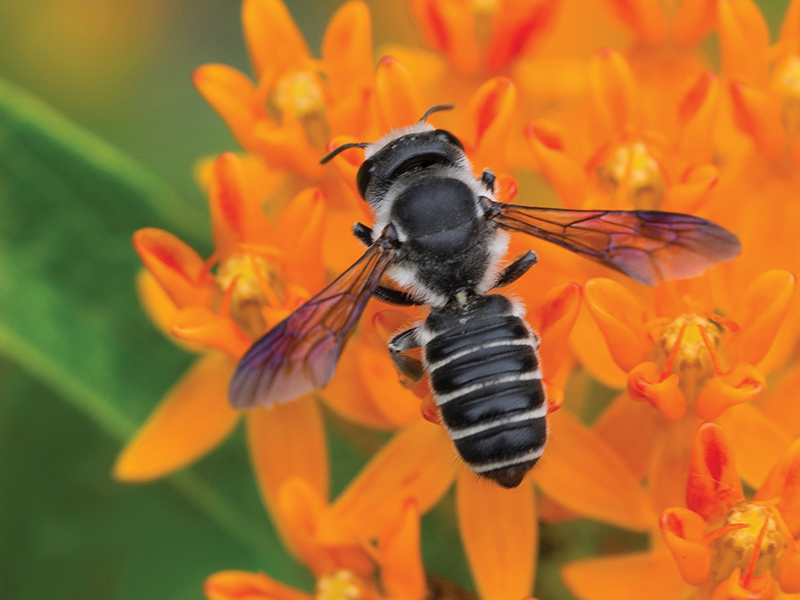
“We hope all of this might help people recognize and enjoy the wild bees they see in their own backyards, gardens and local parks,” she says. “In New York and Connecticut, there are hundreds of dazzlingly beautiful species of wild bees.”
Of course, the amount of time Sharp and Eatman have dedicated to nature photography only begs the question: How many times have you been stung? And their answer is only once — each.
“We’ve each been stung once by domesticated honey bees when we got too close to their hives, but neither of us have ever been stung by a wild bee,” Sharp says. “Why? Very few wild bee species in the northeastern United States are capable of stinging people.”
And those that are capable may be too busy.
“If we photograph a bumble bee from an inch away, she’ll simply ignore us, intent on her pollinating,” Sharp says.
Perhaps they’re not to be feared, after all.
For more about the exhibit, visit brucemuseum.org or call 203-869-0376. For more about Ross Eatman and Paula Sharp, visit sharpeatmanguides.com.

